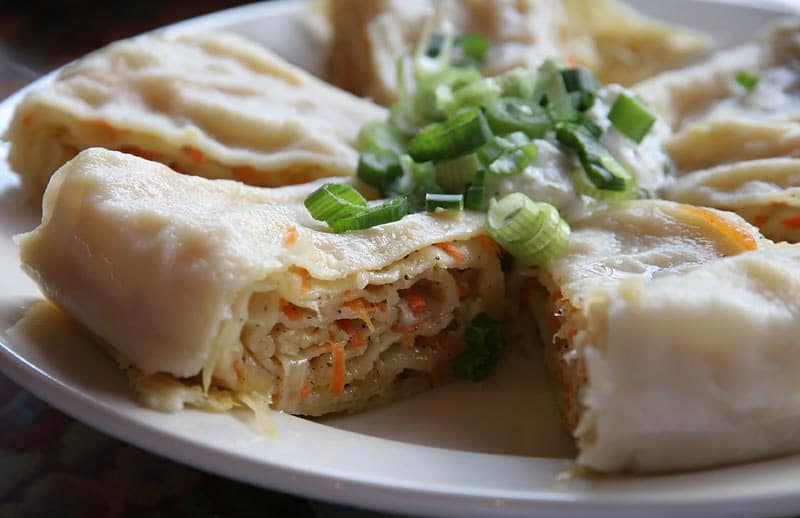For those obsessed with all things pumpkin — pumpkin pie, pumpkin ice-cream, pumpkin-spice lattes — oromo (оромо) is sure to please. Oromo is a rolled, layered, steamed pastry that comes with various fillings (pumpkin being common and our favorite). It evokes everything we love about pumpkin season back home in the States. This main dish is warm, comforting, filling, and hits the spot with hot tea after a cold day.
Oromo is most often associated with the peoples of Kyrgyzstan, Kazakhsta, Uzbekistan, Tajikistan, and Tatarstan. Unlike many other Central Asian dishes such as plov, manti, and lagman, oromo has failed to win a following in Russia and Eastern Europe. However, that doesn’t make it any less delicious.
How Oromo Got Its Name
Почему они носят такое название?
The name “oromo” is a noun version of the Kyrgyz verb, “ороо,” which means “to roll.” Oromo starts off with a large, flat sheet of dough. It is spread with filling and rolled into a tube which is then steamed and served in severed portions. Thus, the name “the roll” seems entirely appropriate.
The dish is named “орама” in Kazakh for the same reason. As Kazakh is a more populous language, the dish is often called “orama” in English. In Russia, the dish is better known by its Tartar name, “ханум”. Traditions vary slightly across the various cultures that enjoy oromo, but the dish is always recognizably the same.
When and How to Eat Oromo
(Как правильно есть оромо?)
Oromo is a standard, everyday dish. It is usually eaten with the hands in Kyrgyzstan, which is messy but traditional for many Kyrgyz dishes. The Kyrgyz are a traditionally nomadic people for whom travelling light was a priority. Thus, food is often eaten from a common plate and silverware is generally viewed as optional.
Oromo can be served with a variety of sauces. A common sauce has fresh tomatoes with spices, finely chopped greens, and yoghurt (or sour milk). Another popular sauce is a mix of fresh tomatoes, vinegar, and horseradish.
How to Prepare Oromo
(Как правильно готовить оромо?)
Oromo is prepared in a special tiered steamer called a “мантоварка” (mantovarka). The mantovarka derives its name from manti (манты), a Central Asian meat dumpling. It has a pan for boiling water, several perforated tiers above it to hold the food in the steam the boiling water emits, and a tight lid. The most important aspect of mantovarka is that the lid closes tightly. Be sure to lightly grease the tiers so that the оромо does not stick.
Oromo is quite similar to manti, which are smaller packets of dough stuffed with the same type of filling and steamed in the same manner. However, manti requires folding many individual portions while oromo requires rolling a single tube. For this reason, oromo is sometimes also refered to as “ленивые манты” (lazy manti).
There are many varieties of oromo, depending on the seasonal ingredients available. Kyrgyz families typically make the filling from meat and fat with rice and seasonal vegetables being optional additions. Vegetarian varieties, however, do exist – which might be surprising considering how meat-and-fat-heavy the traditional Kyrgyz diet is. These vegetarian options will often include only rice and/or the typical vegetables that go into oromo. Sweet and/or starchy vegetables are typically preferred ‒ including pumpkin, potatoes, sweet potatoes, squash, and sweet peppers.
Oromo Recipe
(Давай приготовим!)
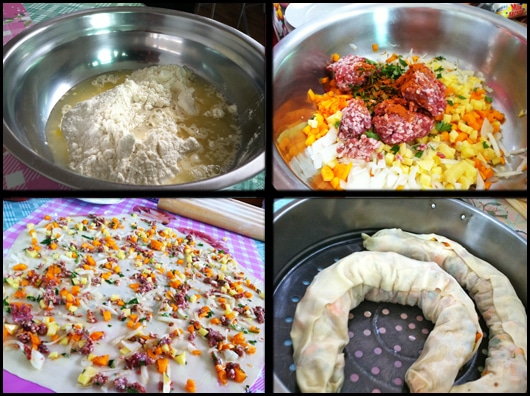
| Киргизский оромо | Kyrgyz Oromo |
| Ингредиенты (на 4 порции)
Для теста
Для начинки
Примечание: Состав ингредиентов может меняться в зависимости от желания и времени года. Приготовление
|
Ingredients (for 4 portions)
For the dough
For the filling
Note: Ingredients will vary depending on personal taste and time of year. Preparation
|
Our Favorite Oromo/Khanum Videos
In this video, Chef Vlyacheslav Baraev from The Beluga Restaurant in Dusseldorf, Germany gives a quick four-minute tutorial on how to make oromo in the shape of a rose. Chef Baraev’s clear Russian accent and happy-go-lucky attitude, set to light accordion background music, is particularly enjoyable.
This video is taken from the show, “Мы никого не едим и Вам не советуем“, (We Don’t Eat Anyone/Any Animal and Don’t Advise (You to Either). The video’s acoustics may be a distracting because of the loud techno music and ambient noise of kids in the background, but the homey setting of the kitchen, and the conversational style of this cooking class, which includes a back-and-forth dialogue between the women, lends a personal and realistic style to this recipe that makes it less daunting for first-timers.
This video is taken from the culinary channel, GermaCook. Of all the listed videos here, this one is the most professional. It takes place in a shiny, sexy kitchen, and is accompanied by energizing, bubbly music. There is no fun personality to walk you through the steps, but the instructions are all written on the bottom of the screen.
You Might Also Like
Central Asia’s rich tradition of carpet weaving reflects the region’s history, culture, and identity. From the ancient nomads of the Pazyryk Valley to the artisans of Kyrgyz yurts and the urban weavers of Samarkand, carpets have long served both practical and symbolic functions. Their materials, techniques, and motifs reflect centuries of interaction between nomadic and […] The Talking Phrasebook Series presents useful phrases and words in side-by-side translation and with audio files specifically geared to help students work on listening skills and pronunciation. Below, you will find several useful phrases and words. To the left is the English and to the above right is an English transliteration of the Kyrgyz translation. […] Kyrgyz cuisine reflects the country’s heritage of pastoral nomadism. Life was spent moving livestock from pasture to pasture and living in collapsible, transportable yurts. The livestock themselves were the primary, sustainable food source. Everything else was either gathered from the land or traded for. The Kyrgyz did not engage in intensive settled agriculture until forced […] There are few essential things to know about Kyrgyzstan. One of these is the country’s folkloric hero, Manas. You’ll find nearly everything in Krygyzstan is named after him: the main airport, national parks, major streets in nearly every city and town, and even karate clubs and movie theaters, not to mention the statues of him […] What created Kyrgyz national identity? This is a complex question and one that is personal for each Kyrgyz person. This resource will focus on presenting one element of this identity – the Kyrgyz national narrative. Who are the national heroes and what are the pivotal events that they learned about in school? What are the […]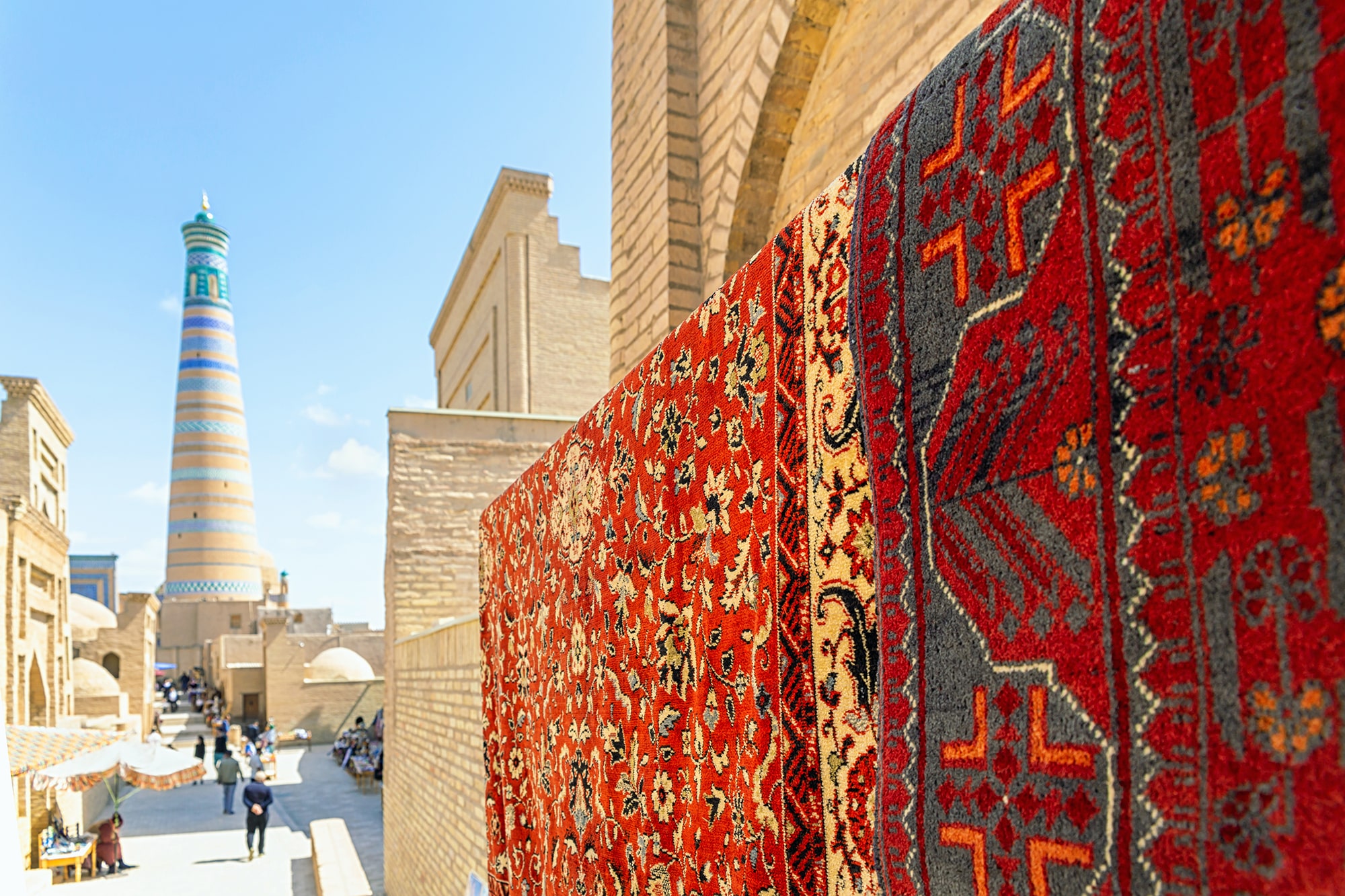
Knots of Culture: Central Asia’s Carpet Weaving Heritage
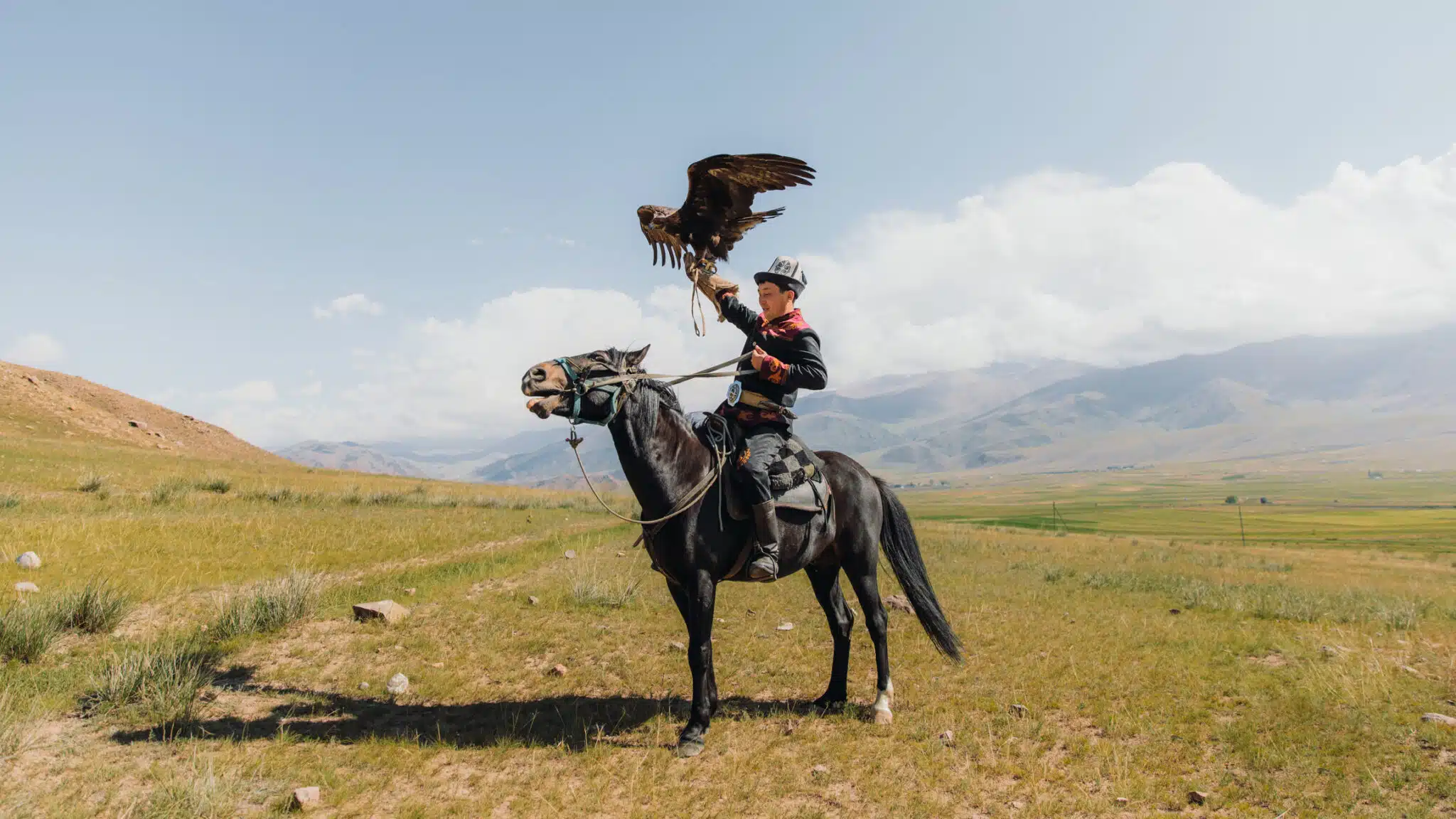
The Talking Kyrgyz Phrasebook
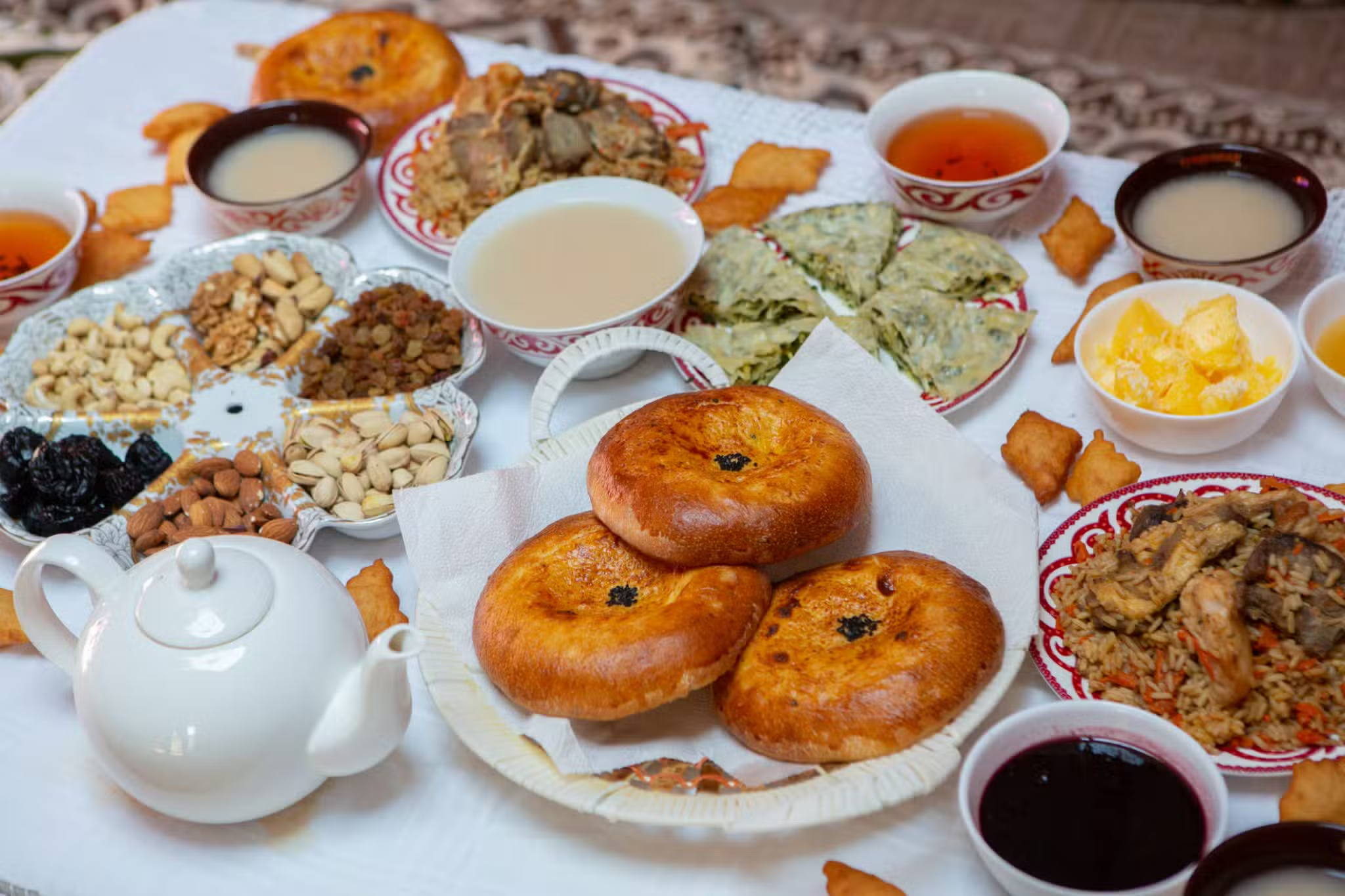
The Kyrgyz Food Dictionary
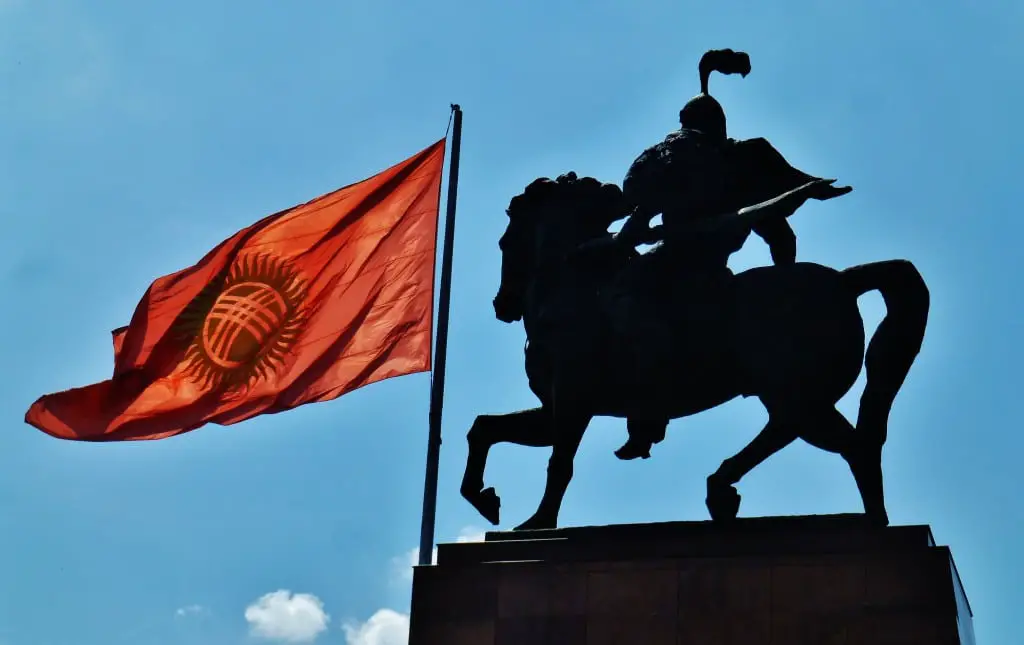
Manas and the Manaschi: Foundations of the Kyrgyz Soul
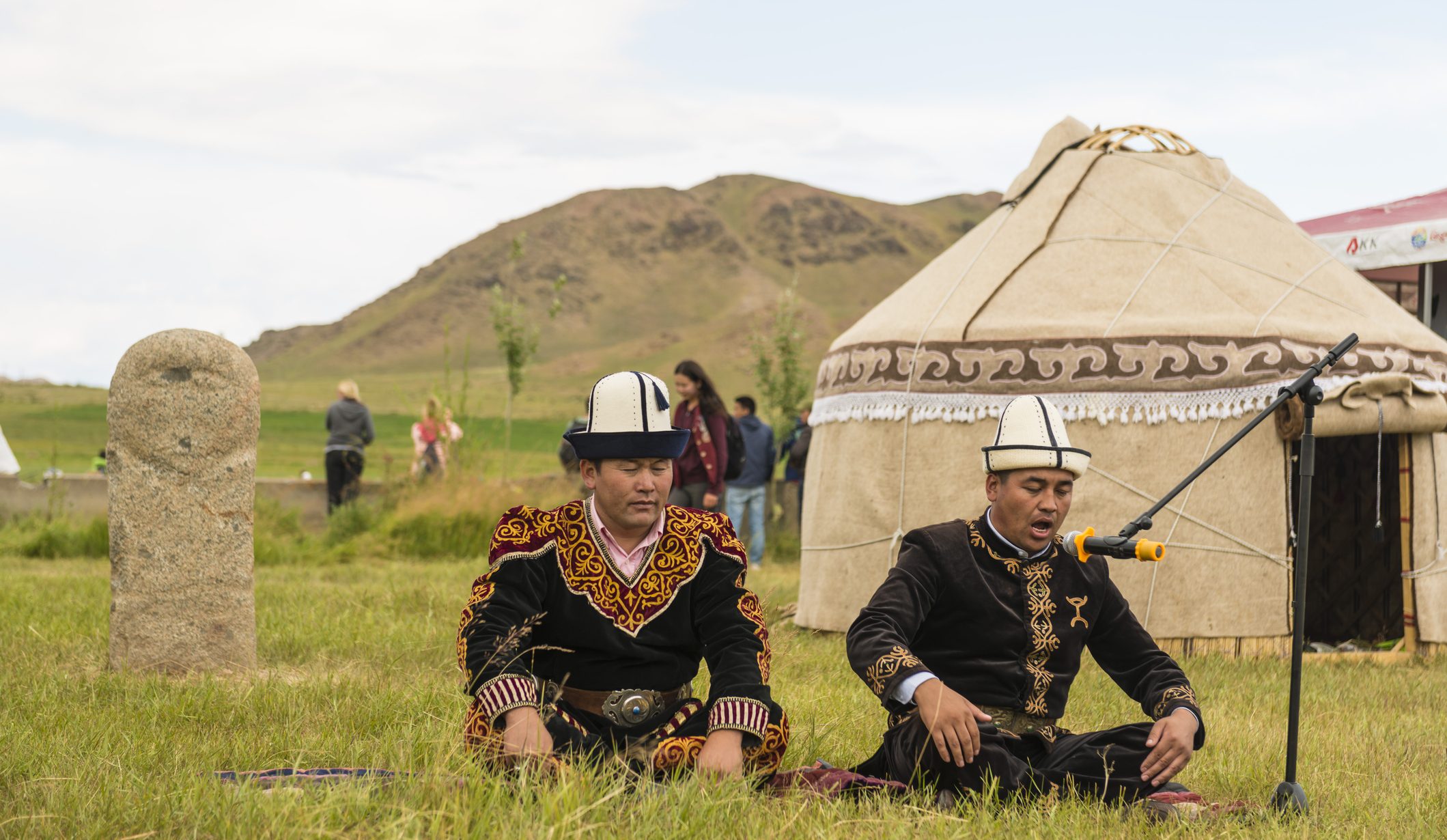
Kyrgyz Identity: Understanding the Kyrgyz National Narrative

